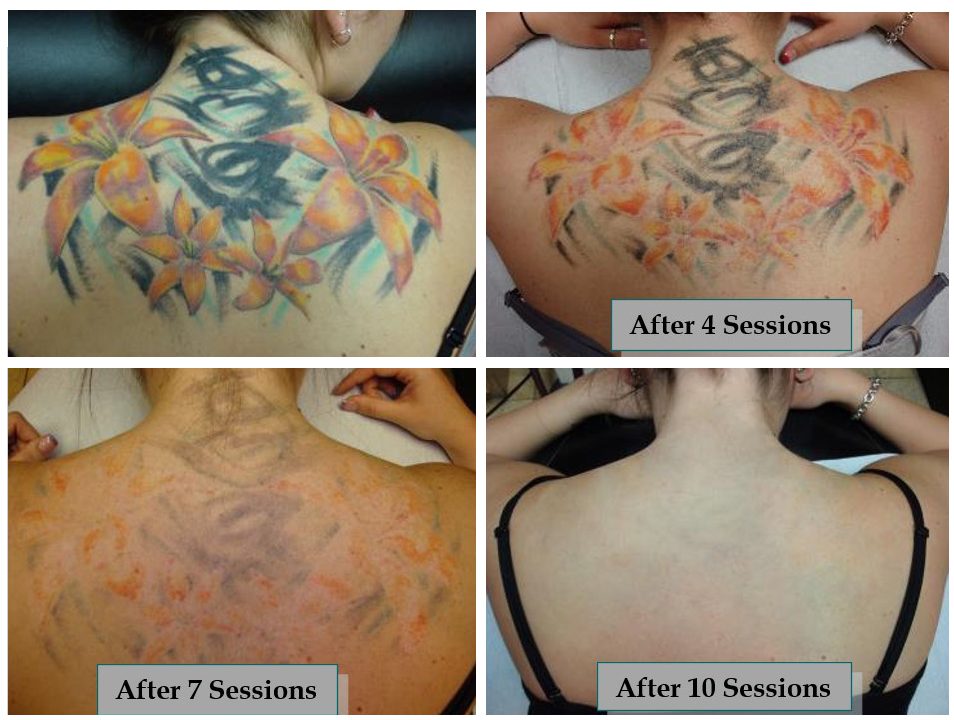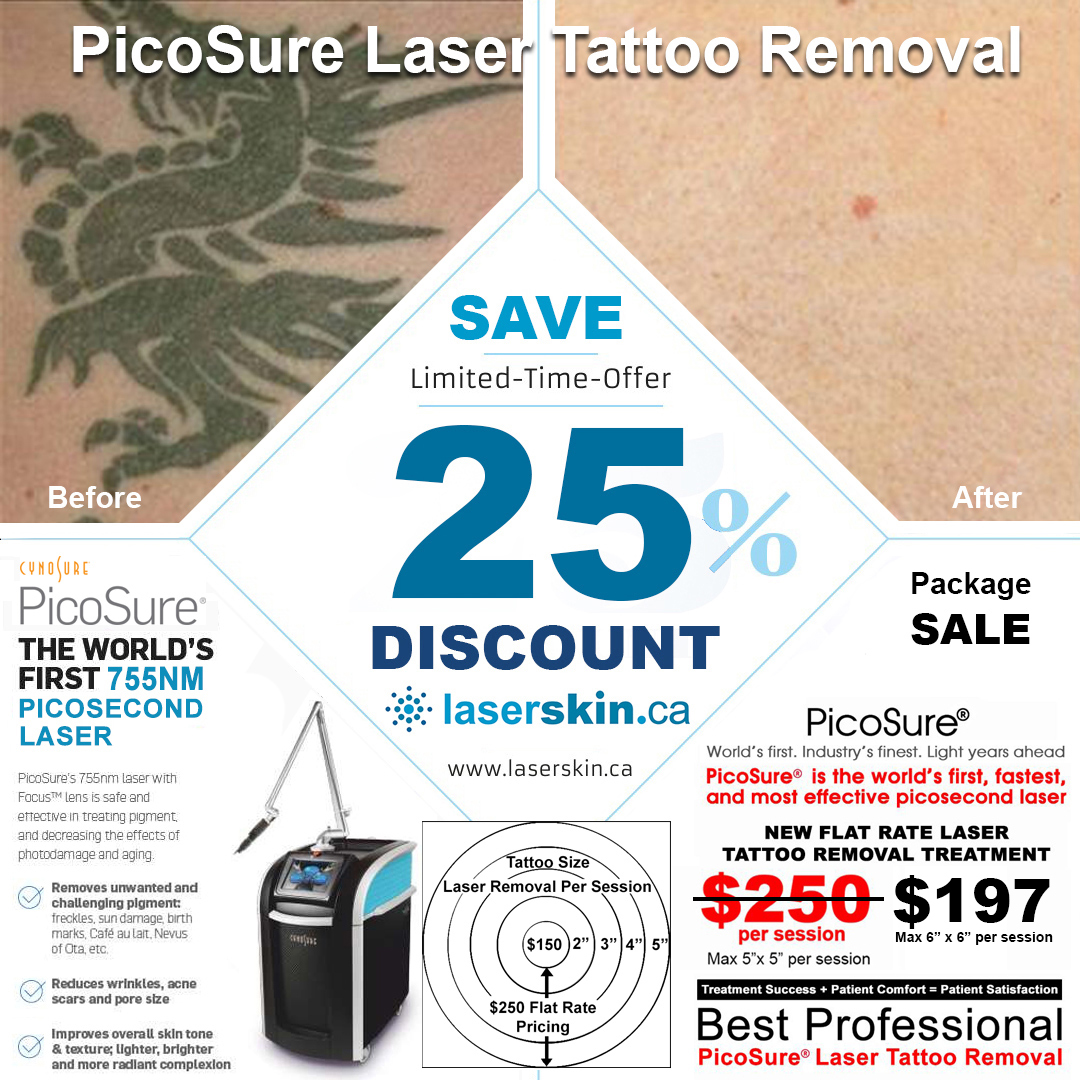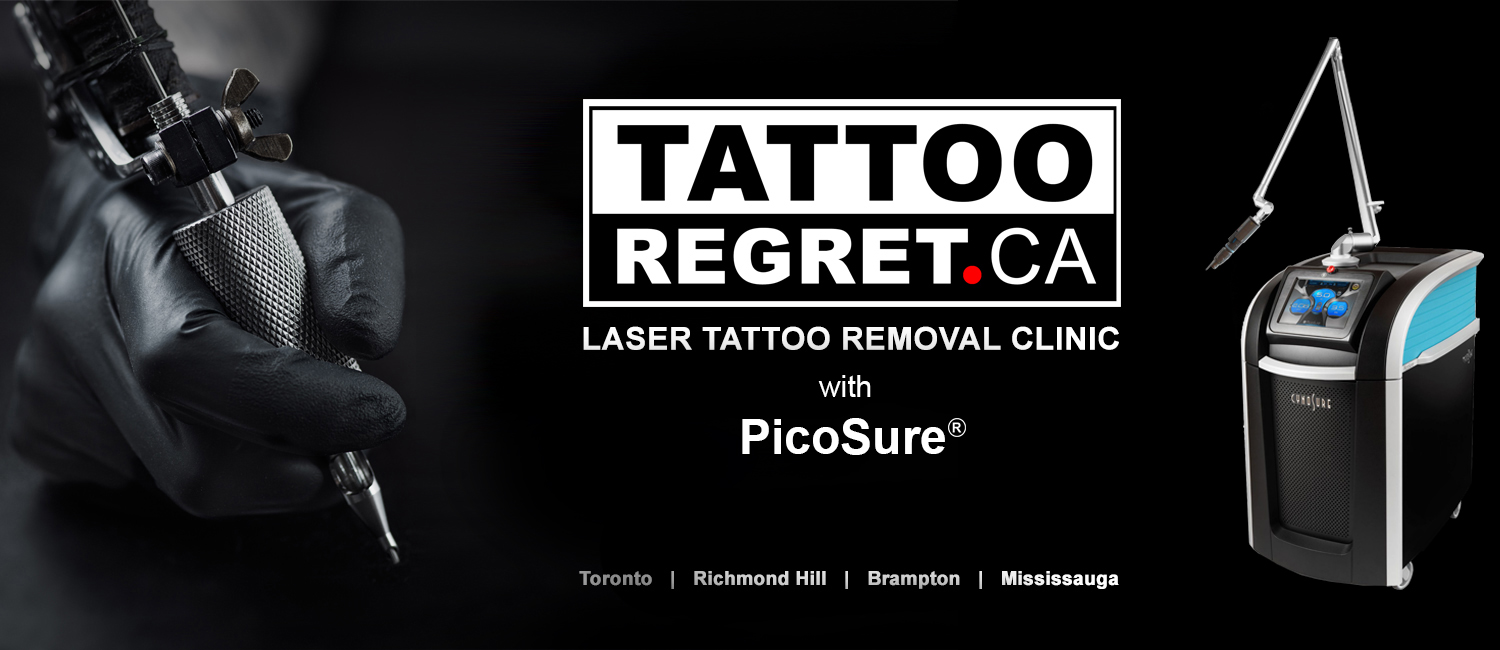Table of Contents
Tattoo Removal Before and After
A tattoo removal process is used to remove permanent ink from your skin. If you possess a tattoo that you desire to eliminate, your physician may recommend a treatment such as laser therapy for the purpose of tattoo removal.
What is Tattoo removal?
Inks and pigments (dyes) are injected into your skin during a tattoo to create a permanent form of body modification. To remove this permanent ink from your body, you need to have the tattoo removed. The immune system typically seeks to eliminate foreign substances from the body, but ink particles are too large for the immune system to stop, which is why they are irreversible. It can be a complex procedure requiring multiple sessions to remove tattoos. This occurs due to professional tattoo ink granules beneath your skin’s surface.
There are various ways to eliminate tattoos, but laser tattoo removal is the most popular. To learn more about the removal options for an unwanted tattoo, it is advisable to consult with a dermatologist or healthcare professional who can offer guidance based on your specific situation.
How does tattoo removal work?
Every tattoo removal method operates differently. The objective of tattoo removal is to reduce the size of the permanent ink so that your immune system can safely eliminate it from your body. With a lesser chance of scarring, this is how laser tattoo removal and tattoo removal creams work. Dermabrasion, chemical peels, and surgical excision are procedures used to remove skin or skin layers containing particles of permanent tattoo ink. Usually, this results in some scarring.
Does tattoo removal hurt?
Different individuals may have different perceptions of pain during tattoo removal, with some comparing it to the sensation of getting a tattoo while others liken it to a rubber band snapping on the skin. Additionally, because some operations are uncomfortable, your surgeon might administer general anesthesia, or a dermatologist might apply a topical anesthetic to your skin or administer a local anesthetic by injection.
Does the location of the tattoo matter?
Laser tattoo removal can be done on any tattoo on any part of the body except a few tiny regions around the eyes. (However, Eyebrow tattoos can be removed.) The procedure commences with an initial consultation conducted by a licensed and skilled laser technician. During your initial visit, the technician will let you know whether your tattoo is close to an area where it is unsafe to use the laser, such as the eye.
How long should you rest between tattoo removal sessions?
For example, depending on their immune system, some people require longer to heal. For best outcomes, your technician will decide how often to provide treatments. It is generally advisable to wait six to eight weeks between treatments. This is because the ink will continue to be absorbed by your body throughout this time while the skin recovers from the procedure.
Some people occasionally develop skin fatigue, which indicates that the skin is healing more slowly than six weeks. Skin weariness also reduces the body’s capacity to eliminate ink effectively. Skin fatigue can result from using the laser in the wrong settings or not giving the skin enough time to recover between sessions.
How well the body can absorb and eliminate the ink particles that the laser destroys is greatly influenced by the state of your immune system. Thus, your general health may affect the length of your recuperation process.
You could be a candidate for tattoo removal if you:
• Don’t smoke.
• Have a tattoo you want removed.
• Have realistic expectations for the procedure.
• Are healthy.
• Understand the possible side effects and risks.
So why do people get tattoos removed?
Everyone’s motivation for wanting to get rid of a tattoo is different. Some of the most common causes are:
• Your line of work doesn’t allow visible tattoos.
• You no longer like your tattoo.
• Your tattoo reminds you of a person or event negatively affecting your life.

What are the side effects and risks of tattoo removal?
While tattoo removal is generally considered safe, there are potential risks and side effects. These may include skin irritation, redness, swelling, blistering, scarring, changes in skin pigmentation, and infection. Therefore, consulting with a qualified professional to discuss your case and the associated risks is crucial.
Can tattoo removal be performed on any part of the body?
In general, laser tattoo removal can be done on tattoos located on any part of the body except for a few small regions around the eyes. However, consulting with a qualified professional to assess the specific tattoo and its location is essential to ensure safe and effective treatment.
What are common reasons why people choose to get their tattoos removed?
People have various motivations for wanting to remove tattoos. Common reasons include:
- Restrictions imposed by specific workplaces that prohibit visible tattoos.
- Changes in personal preferences or tastes.
- Tattoos serve as reminders of negative experiences or individuals in one’s life.
Can the length of the recovery process be affected by a person's overall health and immune system?
Yes, an individual’s immune system and overall health can influence the body’s ability to absorb and eliminate ink particles. A healthy lifestyle, proper nutrition, and good immune function can improve healing and recovery.
Are there any specific precautions or aftercare instructions following a tattoo removal session?
After a tattoo removal session, following the aftercare instructions provided by the professional is essential. This can include keeping the treated area clean, avoiding excessive sun exposure, refraining from scratching or picking at the skin, and applying recommended ointments or creams to aid in healing and prevent infection.
Are there any non-laser options available for tattoo removal?
In addition to laser tattoo removal, other tattoo removal methods are available. These include surgical excision, dermabrasion (mechanically removing the top layers of skin), and chemical peels (applying a chemical solution to remove the tattooed skin layers). The suitability of these alternatives depends on factors such as the size, colour, and location of the tattoo, as well as individual considerations and preferences.
Tattoo Removal Before and After
If you’re curious about the transformative effects of tattoo removal before and after, look no further than the innovative PicoSure laser technology. PicoSure has revolutionized the tattoo removal field, offering remarkable results for individuals seeking to erase unwanted ink. With its ultra-fast pulses and precise targeting, PicoSure breaks down tattoo pigments effectively, resulting in noticeable improvements in the appearance of tattoos over time. Whether you desire complete tattoo removal or want to fade a tattoo for a cover-up, PicoSure’s impressive before and after outcomes speak for themselves. Embrace the opportunity to witness the remarkable transformation of your skin with PicoSure tattoo removal before and after.


